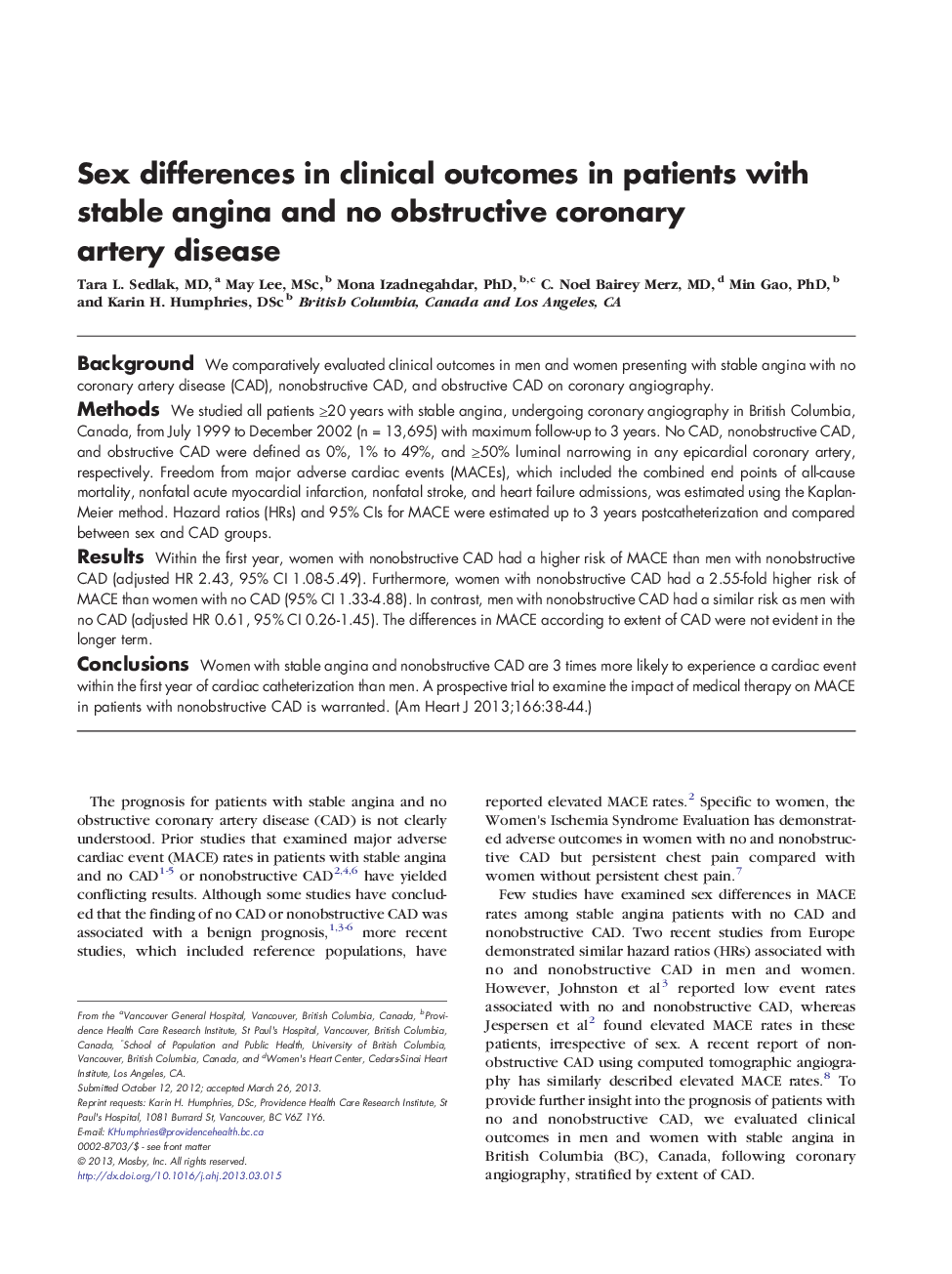| Article ID | Journal | Published Year | Pages | File Type |
|---|---|---|---|---|
| 2848817 | American Heart Journal | 2013 | 7 Pages |
BackgroundWe comparatively evaluated clinical outcomes in men and women presenting with stable angina with no coronary artery disease (CAD), nonobstructive CAD, and obstructive CAD on coronary angiography.MethodsWe studied all patients ≥20 years with stable angina, undergoing coronary angiography in British Columbia, Canada, from July 1999 to December 2002 (n = 13,695) with maximum follow-up to 3 years. No CAD, nonobstructive CAD, and obstructive CAD were defined as 0%, 1% to 49%, and ≥50% luminal narrowing in any epicardial coronary artery, respectively. Freedom from major adverse cardiac events (MACEs), which included the combined end points of all-cause mortality, nonfatal acute myocardial infarction, nonfatal stroke, and heart failure admissions, was estimated using the Kaplan-Meier method. Hazard ratios (HRs) and 95% CIs for MACE were estimated up to 3 years postcatheterization and compared between sex and CAD groups.ResultsWithin the first year, women with nonobstructive CAD had a higher risk of MACE than men with nonobstructive CAD (adjusted HR 2.43, 95% CI 1.08-5.49). Furthermore, women with nonobstructive CAD had a 2.55-fold higher risk of MACE than women with no CAD (95% CI 1.33-4.88). In contrast, men with nonobstructive CAD had a similar risk as men with no CAD (adjusted HR 0.61, 95% CI 0.26-1.45). The differences in MACE according to extent of CAD were not evident in the longer term.ConclusionsWomen with stable angina and nonobstructive CAD are 3 times more likely to experience a cardiac event within the first year of cardiac catheterization than men. A prospective trial to examine the impact of medical therapy on MACE in patients with nonobstructive CAD is warranted.
